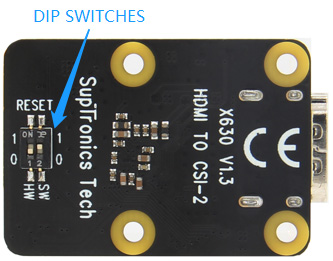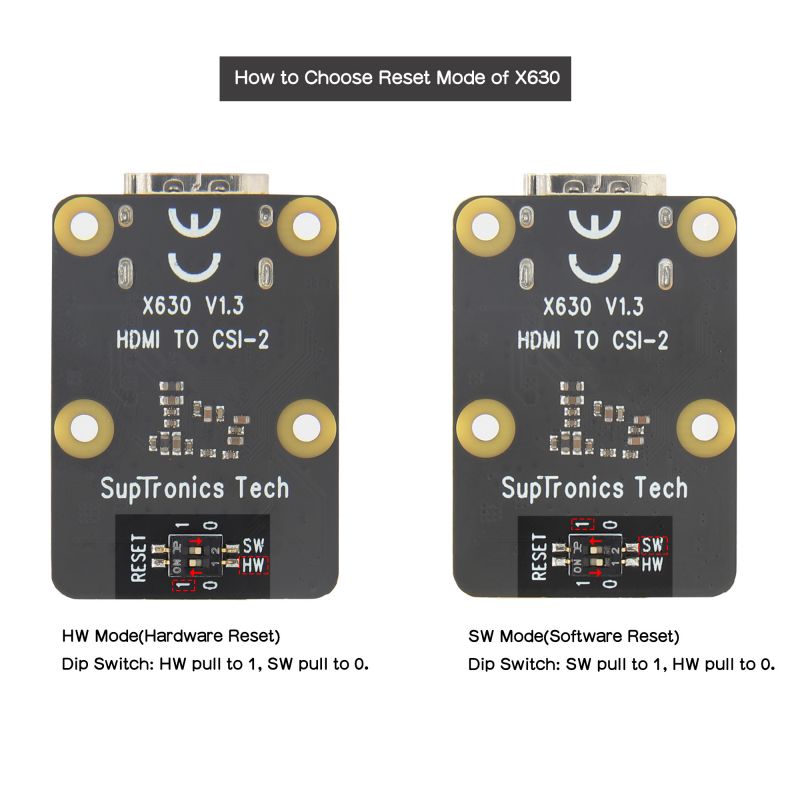Difference between revisions of "X630-Software"
| (43 intermediate revisions by 3 users not shown) | |||
| Line 1: | Line 1: | ||
{{GD Template Impl}} | {{GD Template Impl}} | ||
| − | This wiki describes how to use x630 on the Raspberry Pi OS. | + | This wiki describes how to use x630 on the Raspberry Pi OS. |
| − | + | The Raspberry Pi Foundation has updated several versions recently; | |
| − | |||
| − | + | The use guide of X630 depends on the official Raspberry Pi OS version you are using. Different versions have different usage methods. If you have some questions, please contact us and attach the os version you are using.(<span style="color:red;">Email: support@geekworm.com</span>) | |
| − | |||
| − | + | <span style="color:red;">Update on Augest 2024:</span> | |
| − | |||
| − | |||
| − | |||
| − | |||
| − | |||
| − | |||
| − | |||
| − | |||
| − | [[ | + | If you use the latest bookworm os, you can refer to the [[X1300 Software]] tutorial. |
| + | But please note: Since X1300 supports 1080P@60hz, but X630 only supports 1080P@50hz, you '''cannot''' use the EDID provided in the X1300 tutorial. You can directly use the EDID provided by the Raspberry Pi Foundation: https://github.com/6by9/CSI2_device_config/blob/master/1080P50EDID.txt | ||
| − | + | ==For Raspberry Pi OS== | |
| − | + | '''NOTE:''' | |
| − | |||
| − | |||
| − | |||
| − | |||
| − | ''' | ||
| − | + | Since the X630 V1.5 version removes the software reset&hardware reset DIP switch, for the V1.5 version, please ignore the use of software reset or directly visit to [[X630-Hardware-Reset]] | |
| − | |||
| − | |||
| − | + | X630 v1.3 has two reset mode: '''Hardware reset''' and '''Software reset''' modes; | |
| − | |||
| − | |||
| − | + | You can use hardware reset mode if you use it on raspberry pi hardware or raspberry pi os, software reset uses GPIO 509 to reset operation through GPIO, which can prevent you from restarting the Raspberry Pi repeatedly, which is very convenient. | |
| − | |||
| − | |||
| − | + | The user guide of X630 is similar to [[HDMI TO CSI-2|C779]] when X630 is in hardware mode, but X630 supports audio when used with X630-A2, and [[HDMI TO CSI-2|C779]] does not support audio | |
| − | |||
| − | + | First, please confirm & select X630 work mode according the picture; After November 2021, the default factory mode is hardware mode; | |
| − | |||
| − | |||
| − | |||
| − | |||
| − | + | We found that some users prefer hardware mode, so our factory default settings have been changed to hardware mode | |
| − | + | [[File:Dip-switches.jpg|none|dip switch]] | |
| − | + | <span style="color:red;">Disconnect power to the Raspberry Pi before changing dip switch positions!!!</span> | |
| − | |||
| − | |||
| − | + | {| class="wikitable" | |
| + | ! SELECTION !! SWITCH SETTINGS !! | ||
| + | |- | ||
| + | | Hardware reset(Default) || HW = 1 || SW = 0 | ||
| + | |- | ||
| + | | Software reset || HW = 0 || SW = 1 | ||
| + | |} | ||
| − | + | [[File:X630-Reset-01.jpg|none|800px|X630 dip switch setting]] | |
| − | + | Explain: | |
| − | + | * Hardware reset: After starting RASPISTILL or RASPIVID <span style="color:red;">once</span> then you will need to reboot Raspberry Pi to restart it again (Please use when operating system cannot control the X630 module via GPIO509) | |
| − | + | * Software reset: Starting RASPISTILL or RASPIVID <span style="color:red;">multiple times</span> and don't need to reboot Raspberry Pi. | |
| − | + | * Default setting is 'Hardware reset'. | |
| − | + | * Please remove the yellow protective film before change dip switch. | |
| − | + | <hr/> | |
| − | |||
| − | |||
| − | |||
| − | |||
| − | |||
| − | |||
| − | |||
| − | |||
| − | |||
| − | |||
| − | |||
| − | |||
| − | |||
| − | |||
| − | |||
| − | |||
| − | |||
| − | |||
| − | |||
| − | |||
| − | |||
| − | |||
| − | |||
| − | |||
| − | |||
| − | |||
| − | |||
| − | |||
| − | |||
| − | |||
| − | |||
| − | |||
| − | |||
| − | |||
| − | |||
| − | |||
| − | |||
| − | |||
| − | |||
| − | (Please use when operating system cannot control the X630 module via GPIO509) | ||
| − | |||
| − | |||
| − | |||
| − | |||
| − | |||
| − | |||
| − | |||
| − | |||
| − | |||
| − | |||
| − | |||
| − | |||
| − | |||
| − | |||
| − | |||
| − | |||
| − | |||
| − | |||
| − | |||
| − | |||
| − | Please | ||
| − | |||
| − | |||
| − | |||
| − | |||
| − | |||
| − | |||
| − | |||
| − | |||
| − | |||
| − | |||
| − | |||
| − | |||
| − | |||
| − | + | '''For Hardware Reset''' refer to [[X630-Hardware-Reset]] | |
| − | |||
| − | |||
| − | [[ | ||
| − | + | '''For Software Reset''' refer to [[X630-Software-Reset]] | |
Latest revision as of 10:50, 3 August 2024
This wiki describes how to use x630 on the Raspberry Pi OS.
The Raspberry Pi Foundation has updated several versions recently;
The use guide of X630 depends on the official Raspberry Pi OS version you are using. Different versions have different usage methods. If you have some questions, please contact us and attach the os version you are using.(Email: support@geekworm.com)
Update on Augest 2024:
If you use the latest bookworm os, you can refer to the X1300 Software tutorial. But please note: Since X1300 supports 1080P@60hz, but X630 only supports 1080P@50hz, you cannot use the EDID provided in the X1300 tutorial. You can directly use the EDID provided by the Raspberry Pi Foundation: https://github.com/6by9/CSI2_device_config/blob/master/1080P50EDID.txt
For Raspberry Pi OS
NOTE:
Since the X630 V1.5 version removes the software reset&hardware reset DIP switch, for the V1.5 version, please ignore the use of software reset or directly visit to X630-Hardware-Reset
X630 v1.3 has two reset mode: Hardware reset and Software reset modes;
You can use hardware reset mode if you use it on raspberry pi hardware or raspberry pi os, software reset uses GPIO 509 to reset operation through GPIO, which can prevent you from restarting the Raspberry Pi repeatedly, which is very convenient.
The user guide of X630 is similar to C779 when X630 is in hardware mode, but X630 supports audio when used with X630-A2, and C779 does not support audio
First, please confirm & select X630 work mode according the picture; After November 2021, the default factory mode is hardware mode;
We found that some users prefer hardware mode, so our factory default settings have been changed to hardware mode
Disconnect power to the Raspberry Pi before changing dip switch positions!!!
| SELECTION | SWITCH SETTINGS | |
|---|---|---|
| Hardware reset(Default) | HW = 1 | SW = 0 |
| Software reset | HW = 0 | SW = 1 |
Explain:
- Hardware reset: After starting RASPISTILL or RASPIVID once then you will need to reboot Raspberry Pi to restart it again (Please use when operating system cannot control the X630 module via GPIO509)
- Software reset: Starting RASPISTILL or RASPIVID multiple times and don't need to reboot Raspberry Pi.
- Default setting is 'Hardware reset'.
- Please remove the yellow protective film before change dip switch.
For Hardware Reset refer to X630-Hardware-Reset
For Software Reset refer to X630-Software-Reset
Return to X630


Enable comment auto-refresher